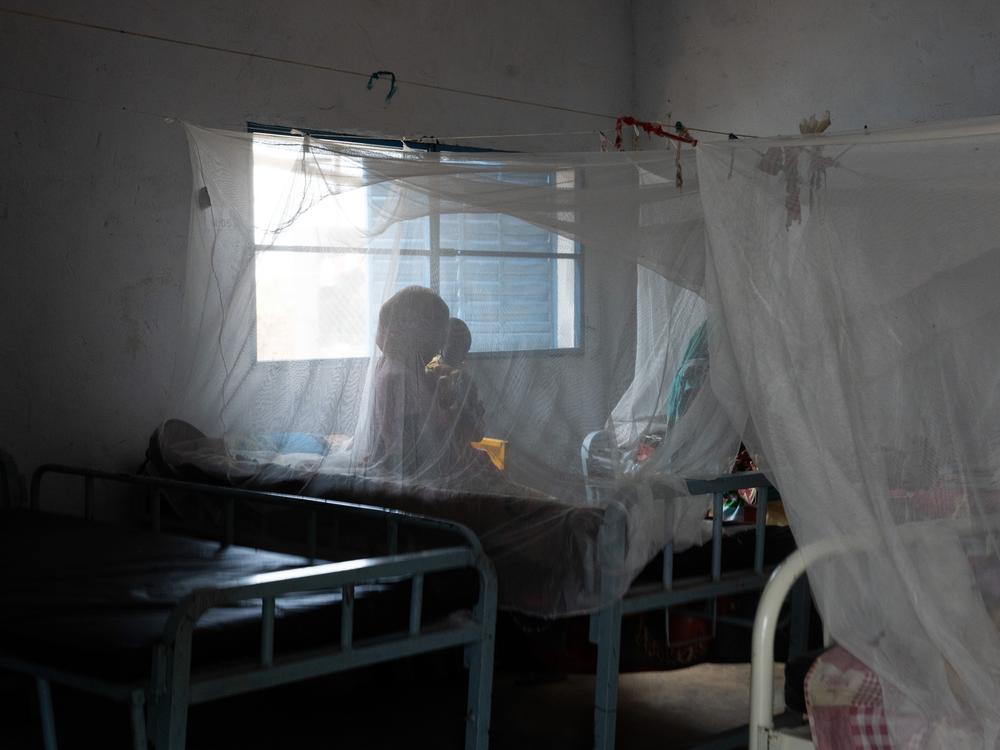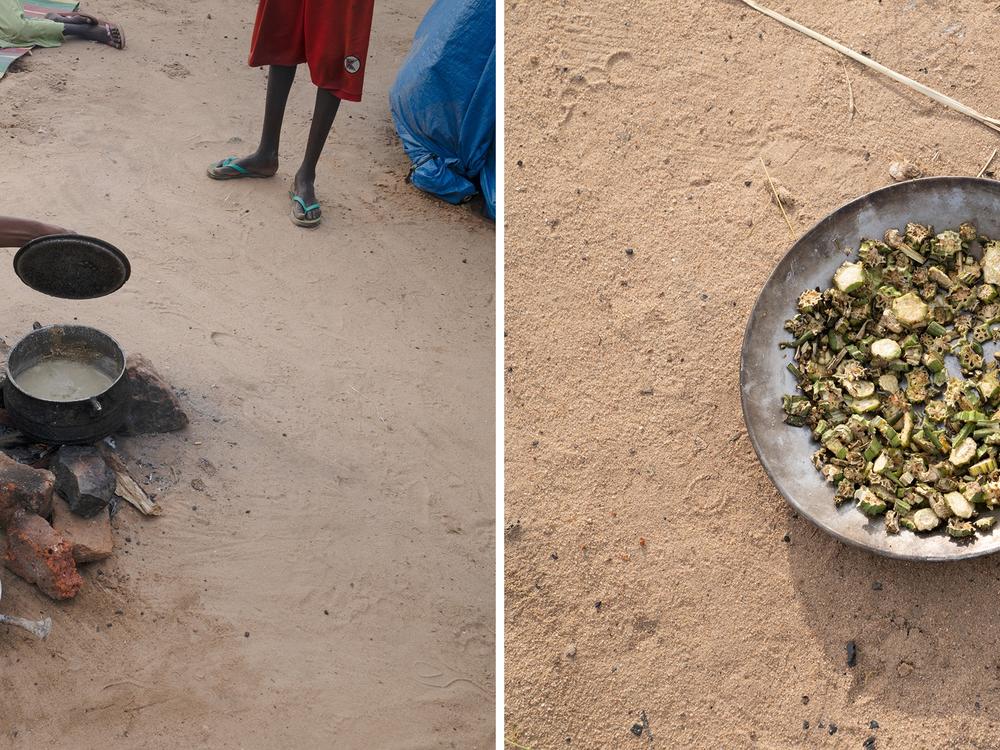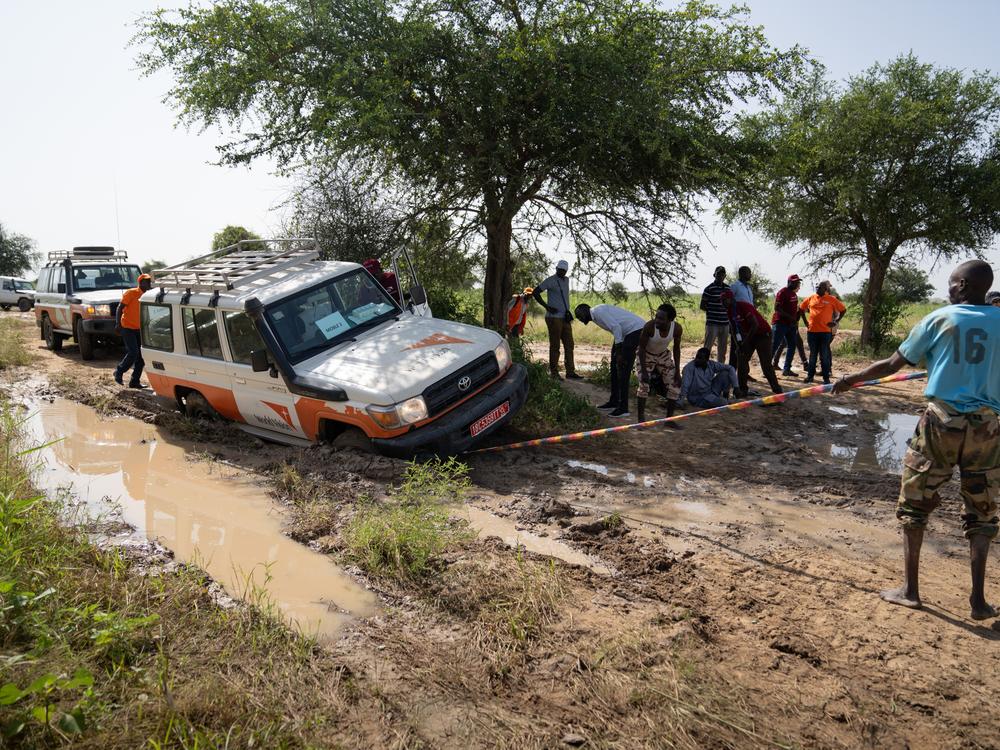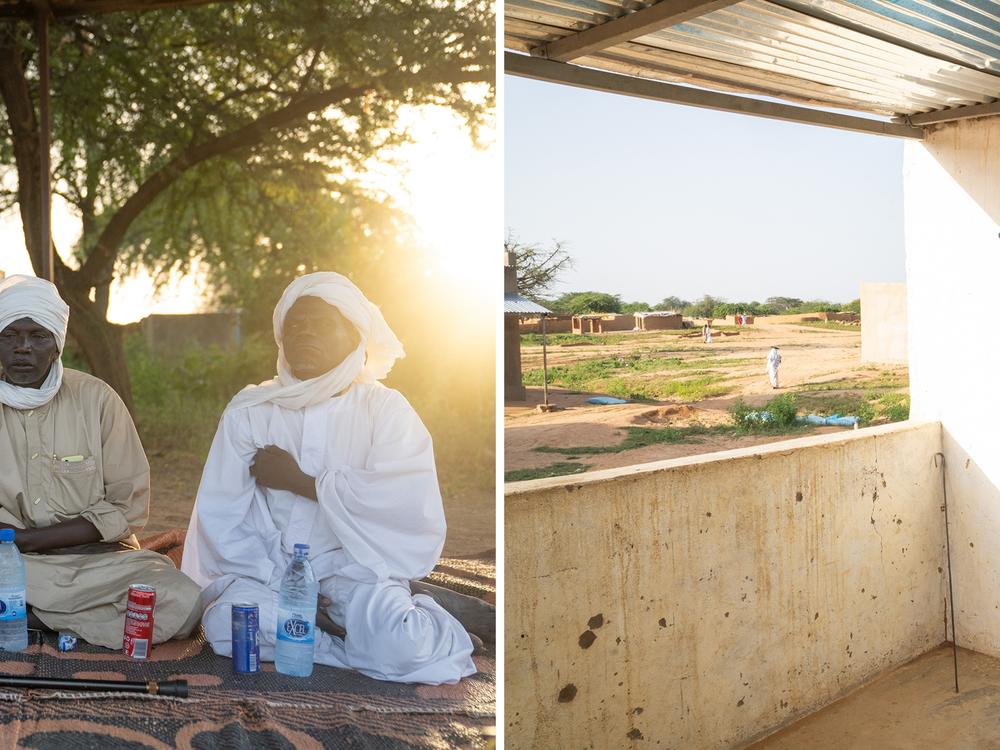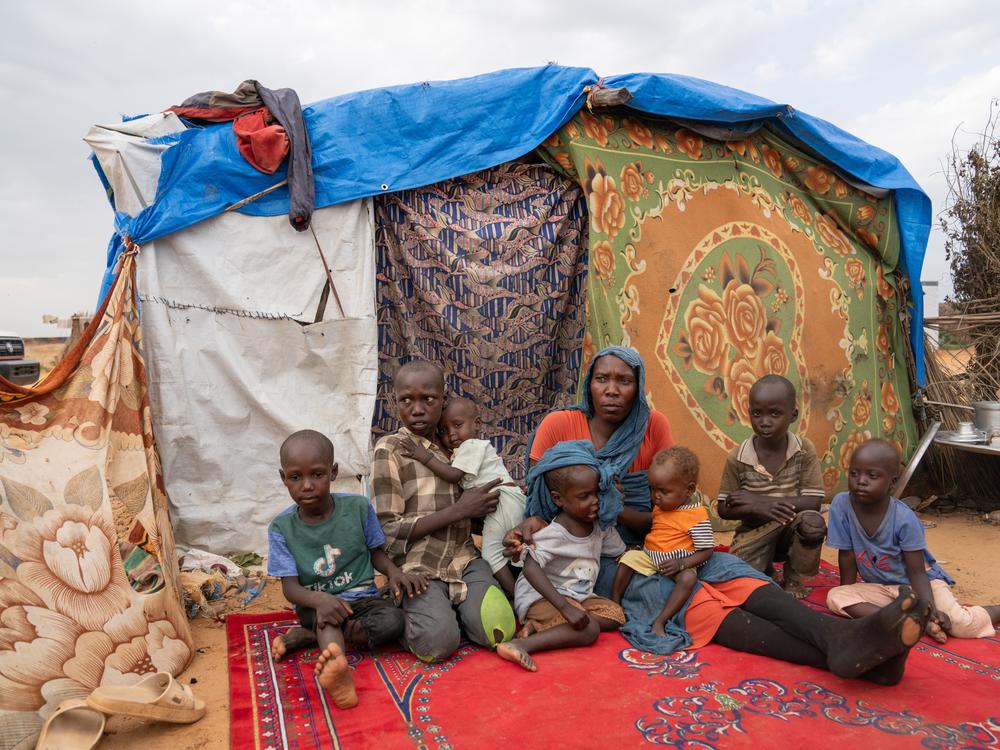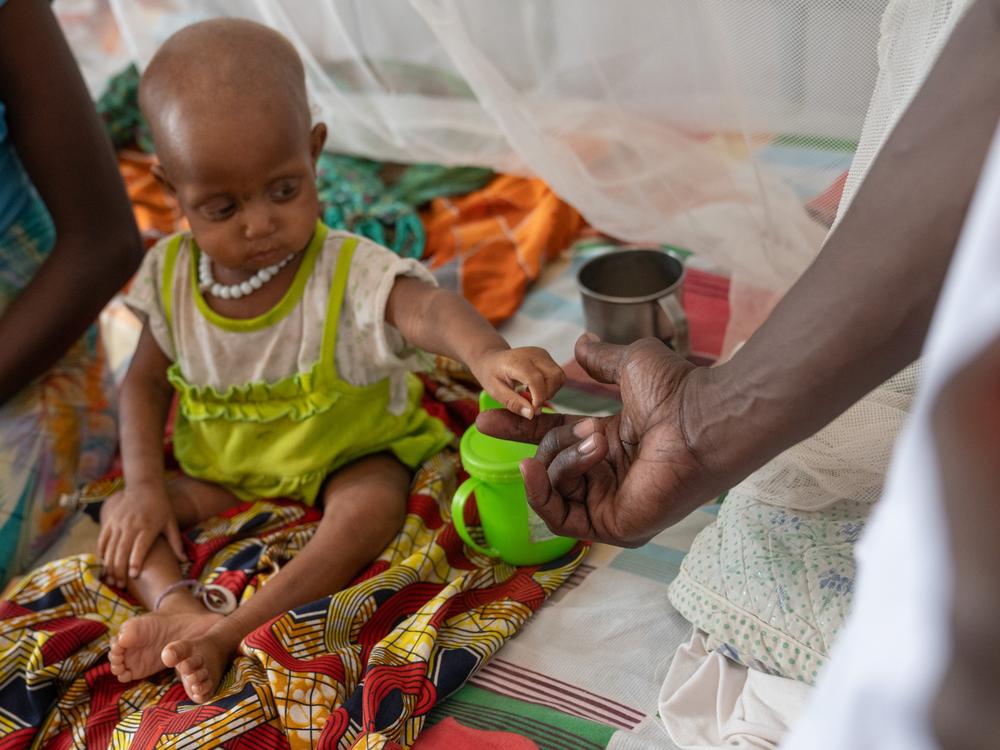Section Branding
Header Content
Sudanese refugees fled to Chad with hope. What they found is a bitter irony
Primary Content
The civil war in Sudan has caused the largest displacement crisis in the world. More than 10 million people have fled their homes. Over 2 million of them have gone to neighboring countries, including 600,000 who have headed to Chad, where more refugees arrive every day. In some places, the Sudanese refugees nearly outnumber locals. Food and water were already scarce in Chad because of the arid climate and recurrent droughts. Resources are strained — and humanitarian aid organizations aren’t able to keep up with the needs of the refugees. NPR's Fatma Tanis spent the past week reporting from eastern Chad and spoke to Ari Shapiro of All Things Considered and Leila Fadel of Morning Edition about what she's seen.
You went to a remote town called Guereda. Tell us what you've seen.
Guereda is about 20 miles from the border with Sudan. The only way in is by road, which is unpaved and flooded and muddy. Now, this town is surrounded by massive refugee camps, where about 90,000 Sudanese people are staying. The majority of the adults are women – they told us the men were either killed, missing or not allowed to leave Sudan by armed groups. More than half of the camp population are children.
These refugees have harrowing stories of the war in Sudan. Many of their family members have been killed. But right now, they are in dire need of food and water and health care. The children I saw today were very thin. Many told me that they're eating only one meal a day – a bland porridge made of water and flour.
I understand why food can't reach Sudan given the war, but you're in Chad. Why can't food reach those people through humanitarian aid organizations?
There are two main issues -- funding and access. World Vision country director Edouard Ngoy told me that 17 months into this crisis they've only received about 20% of the funding they need for their response. Similarly, the United Nations says that of the $1.5 billion needed to support Sudanese refugees, only 25% of that has been met.
Then there's the issue of access. Our car got stuck in the mud on our way to the camps yesterday. It took about an hour to get out. It would have been nearly impossible for a heavier truck carrying aid to make it through.
Because of these conditions, aid organizations like the World Food Programme and World Vision and others started giving refugees small amounts of cash so they can buy their own food from locals. But not everyone has received that help, and food prices have gone up quite a bit because of the demand from a growing number of refugees.
What does all of this mean for local people who have lived in Chad since before the war started?
They're being affected immensely. I sat in on a meeting between community leaders and representatives of the refugee camp. They meet to solve problems together and avoid conflict. Chad is one of the poorest countries in the world, with high food insecurity. Many people here are farmers, and they say that refugees are now living in huge chunks of farmland. Farmers are now looking for new land where they can plant and cultivate crops. And other resources like firewood, which is critical for cooking, and water are also running out.
Community leaders at this meeting told me they want aid organizations to help them set up systems to distribute water and to train people to earn a living in ways other than farming. But they say they’ve not received such help.
And what have you heard from the Sudanese refugees you've spoken with?
Their most pressing concern at the moment is, of course, hunger. One of the few women in the room spoke up bluntly and said that malnutrition among women and children was out of control.
Others said they felt forgotten by the world. One of the refugee elders, Yahya Adam Nadhif asked me: Do Americans know what is happening to us? And he said: "Our people are dying in Sudan because of the war, and they're dying here because of hunger."
Did you speak with any refugee families. How they are coping?
In Adre, a town on the border with Sudan, I met 29-year-old Suad Abdulaziz Ahmad. She was separated from her husband as they were fleeing a year ago and is here in Chad alone with her 5 kids.
She and her children came to Chad with nothing but the clothes on their backs, now in tatters. Ahmad said they witnessed all kinds of atrocities on their way to Chad from West Darfur. She spoke about massacres and looting and dead bodies on the streets.
Since they arrived in Chad in April this year, her youngest daughter, Maha, who is 18 months, became malnourished and is now receiving treatment. Children under the age of 5 are especially at risk of malnutrition.
And what was unexpected was how hopeful she was in spite of it all: That the world was eventually going to come to their aid, that she and the hundreds of thousands of other refugees wouldn’t be left here alone to die of hunger.
In any hunger crisis, children are often the most severely affected because of their need for nutrition. Is that the case in Chad?
It is. I went to a malnutrition clinic in Farchana, serving local communities, and the big Sudanese refugee camp of 20,000 people nearby. According to the U.N., 67% of the camp’s population are children. This is one of the very few clinics in Eastern Chad and is supported by groups like UNICEF, the International Red Cross and World Vision.
Dr. Goukouni Bichara Ahmat, who is from Chad, is the pediatrician who treats the children at the clinic. He told me they are seeing many more cases of severe acute malnutrition in the past year — and that at least 10 children in this area alone have died from complications related to malnutrition.
Are these cases all among refugees?
Both refugee and local children receive treatment at this clinic. I met a Chadian baby girl named Iqbal Abu Bakr Yaqub there. She was wearing a little green dress and a white necklace. She is 15 months old and has been staying at the clinic with her mother for about 2 weeks. They live in a village 30 miles away. Her mother, Halima Ali Adam, who was also very thin, told me she didn’t have milk to breastfeed Iqbal since she was born. She said the child has mostly been fed porridge and occasionally goat’s milk, but recently their goat died.
Dr. Ahmat is now giving Iqbal medication, therapeutic milk formula and other nutritional supplementation, but he told us there wasn’t much improvement.
She was barely eating anything her mother tried to give her, her hair was falling out, her skin was so sensitive that she cried and recoiled every time she was touched. The doctor said these were all symptoms of severe malnutrition.
And this is the second time Dr. Ahmat has had to treat Iqbal for malnutrition and why he says her recovery is going slowly; the first was in March when she was 9 months old. Repeat cases like this can lead to serious developmental damage.
Dr. Ahmat said when he discharges a child from the clinic he gives the family a week’s supply of therapeutic biscuits for the child to eat twice a day for recovery. But he says most often the entire family shares those cookies because they just have nothing else to eat.
